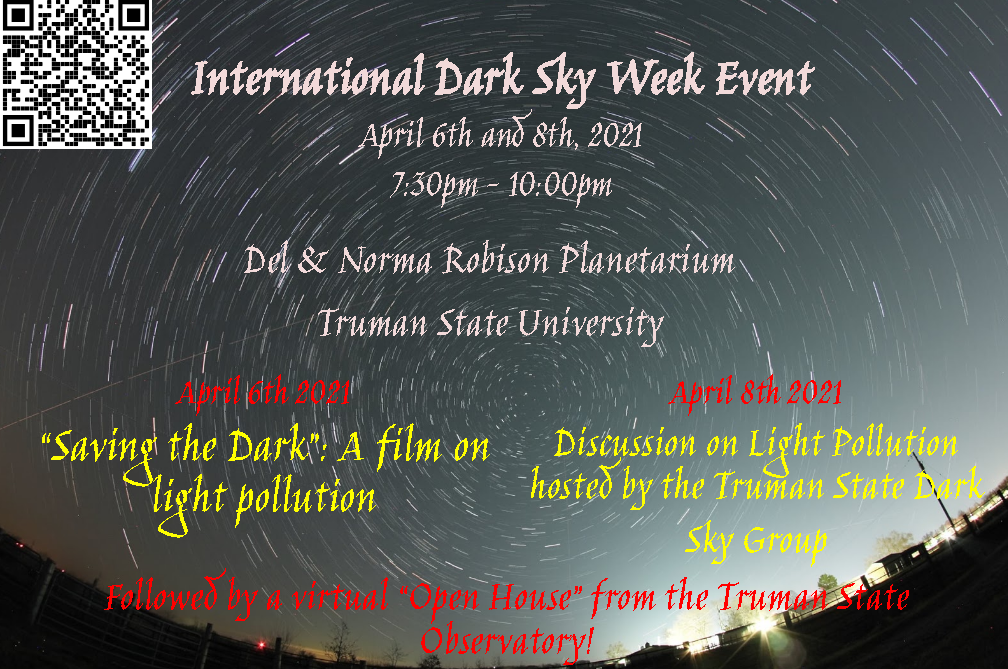EVENTS
-
Follow us on Instagram, Twitter, and facebook.
-
Zoom link to events (6th April 2021 and 8th April 2021)
April 6th 2021
| Time | Event | Speaker | Comments |
| 7:30 pm – 7:40 pm | Welcome: The beauty of the Night Sky (10 mins) | Dr. Gokhale | |
| 7:40 pm – 8:30 PM | Saving the Dark: A film by Sriram Murali | — | |
| 8:30 PM – 10:00 PM | Virtual Observatory Open House | Observational Astronomy class |
April 8th 2021
| Time | Topic | Speaker | Comments |
| 7:30 PM – 7:40 PM | Welcome: The beauty of the Night Sky (10 mins) | LP Research/Outreach Group | |
| 7:40 PM – 7:50 PM | Light Pollution: Why is it important? (10 mins) | Dr. Gokhale | |
| 7:50 PM – 8:00 PM | Outdoor Lighting on Campus (10 mins) | LP Research/Outreach Group | |
| 8:00 PM – 8:15 PM | Solutions to Light Pollution: What can i do? (15 mins) | LP Research/Outreach Group | |
| 8:15 PM – 8:30 PM | Q&A, survey, prizes | LP Research/Outreach Group | |
| 8:30 PM – 10:00 PM | Virtual Observatory Open House | Observational Astronomy class |
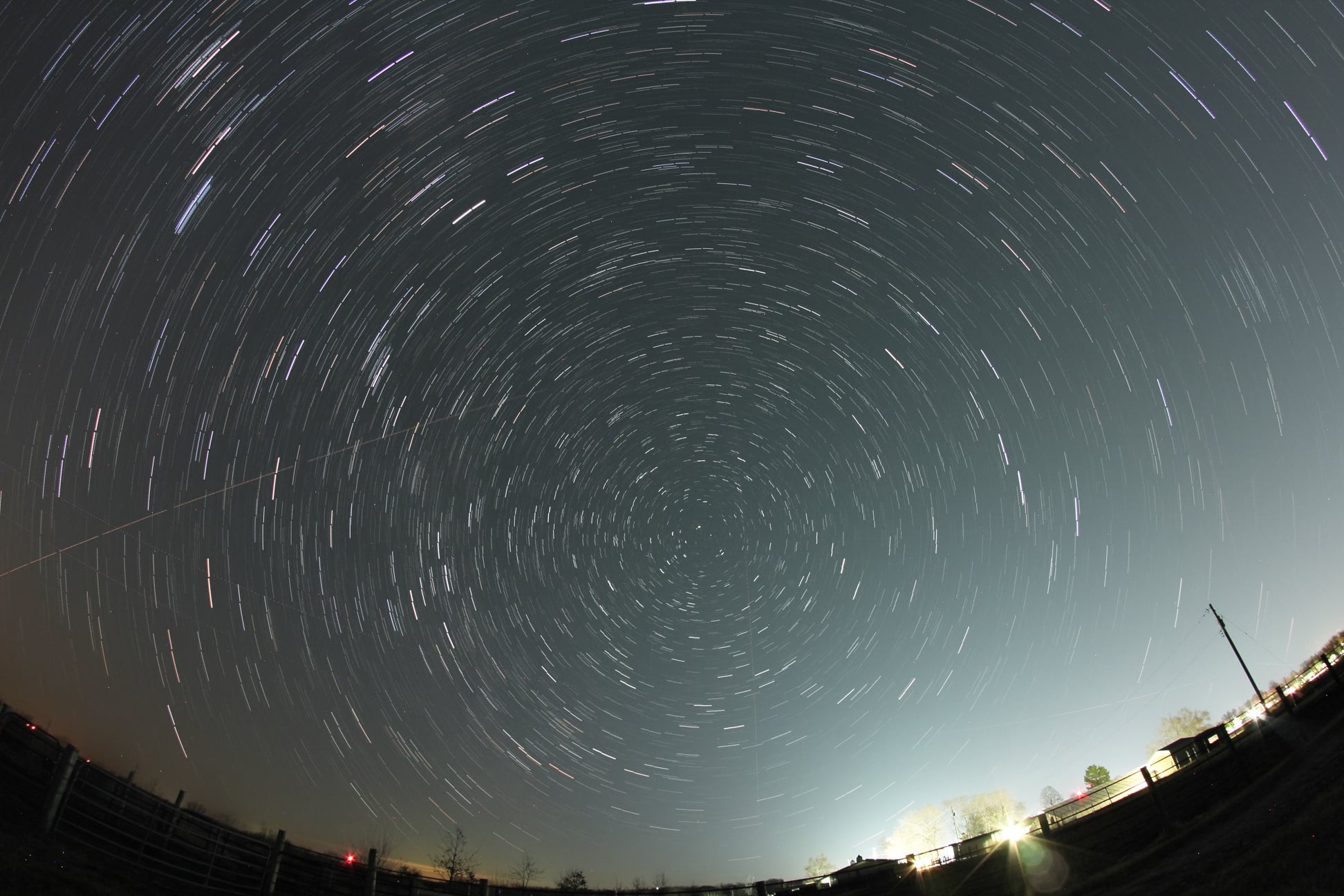
Star trails at the Truman University farm, located southwest of the town of Kirksville Sky glow from Kirksville washes out the north-east part of the sky (right side of image),whilst the left side of the image (W-SW), where Thousand-hills state park and Rainbow basin are located, shows darker skies.
What is Light Pollution?
The inappropriate or excessive use of artificial light – known as light pollution – can have serious environmental consequences for humans, wildlife, and our climate. Components of light pollution include:
- Glare – excessive brightness that causes visual discomfort
- Skyglow – brightening of the night sky over inhabited areas
- Light trespass – light falling where it is not intended or needed
- Clutter – bright, confusing and excessive groupings of light sources
Truman State & Light Pollution
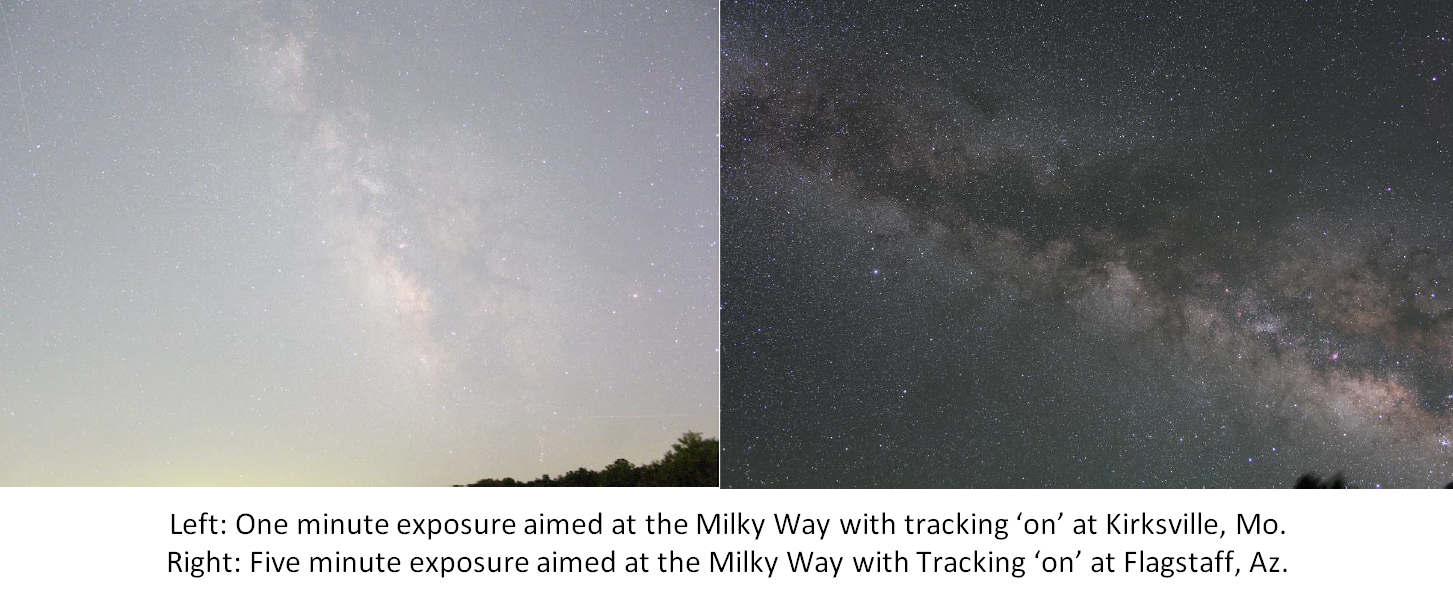
In the last three years, we have established a ‘Light Pollution group’ on campus consisting of approximately 3-5 students and two research advisors, one each from Truman State University (TSU) and the Moberly Area Community College (MACC). Students have used light sensors and an all-sky-camera to monitor the levels of light pollution at different locations around Kirksville, and near Flagstaff, Arizona. Some of these light sensors are controlled by Raspberry-pi microcomputers, and some are fully automatic sensors which are ideal for remote observations, when power-outlets and a wireless network are unavailable. We have successfully applied for grants amounting to close to $10,000 at Truman State University to install light pollution friendly ‘light shields’ on ‘unfriendly’ light fixtures (See Figure II below). This year, we plan on analyzing the quality of the night sky brightness, before and after these fixtures are installed in the fall of 2019.
In addition, we plan on continuing and expanding our outreach and awareness effort to highlight the problem of light pollution, inviting members of the community to initiate actions to reduce light pollution, and in mitigating the related aesthetic, environmental, financial, and public safety issues. In particular, we have established a relationship with ‘Thousand Hills State Park’ (about 10 miles from the Truman campus) to monitor the light pollution levels at the state park. This year with the help of the Missouri chapter of the International Dark Sky Association (https://darkskymissouri.org/), we will extend this to other parks and recreational areas in Missouri.
Research Objectives:
The primary research questions we wish to continue to explore are:
- How do local weather conditions such as temperature, humidity, cloud over, and so on affect the sky brightness as measured by the SQMs? In particular, we want to investigate the impact on sky brightness of different types of clouds (high/low cirrus, thick/thin stratus, cumulus, cumulonimbus clouds etc.).
- In what way does sky brightness change as a result of installing warm colored lights and dark-sky friendly light shields?
We are addressing these research questions by using following resources that enable us to obtain sky brightness data in different ways.
- Sky Quality Meters: SQMs installed at 15 locations across the state of Missouri,
- All-Sky-Cameras: Build, Set up, and Calibrate FIVE all-sky-cameras (costing about $200 each) to be set up on a rotational basis at the above locations,
- Satellite Data: Use VIIRS satellite data as a benchmark to compare SQM and all-sky-camera measurements (https://www.lightpollutionmap.info/),Students are using freely available resources to obtain the weather data in order to address the primary research question:
- Weather data: Weather data obtained from the weather station from the nearest airport to the SQM location (https://www.ncdc.noaa.gov/cdo-web/datatools/lcd).
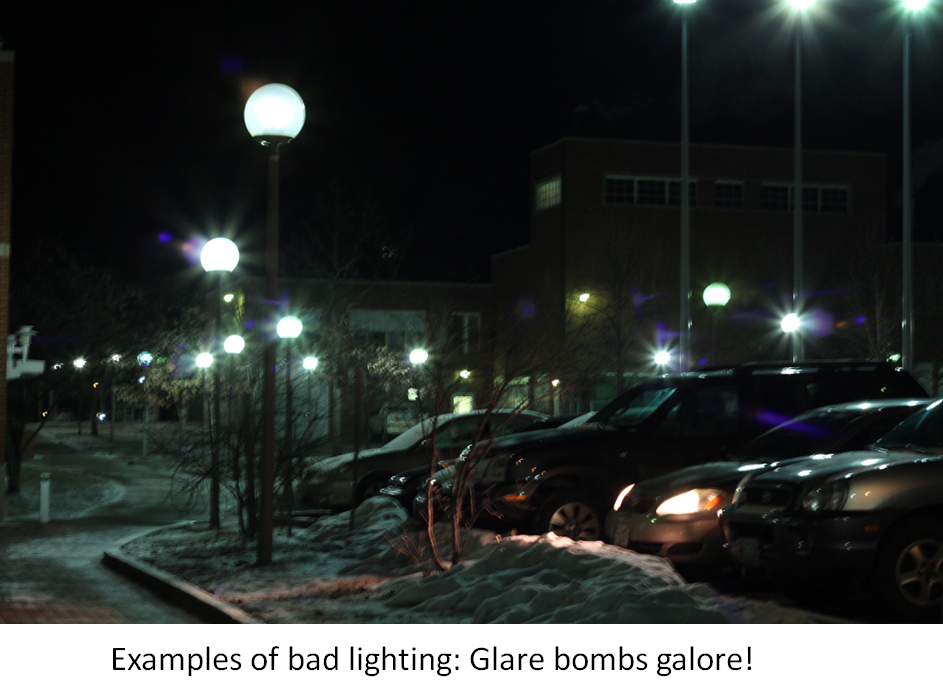
What can i do?
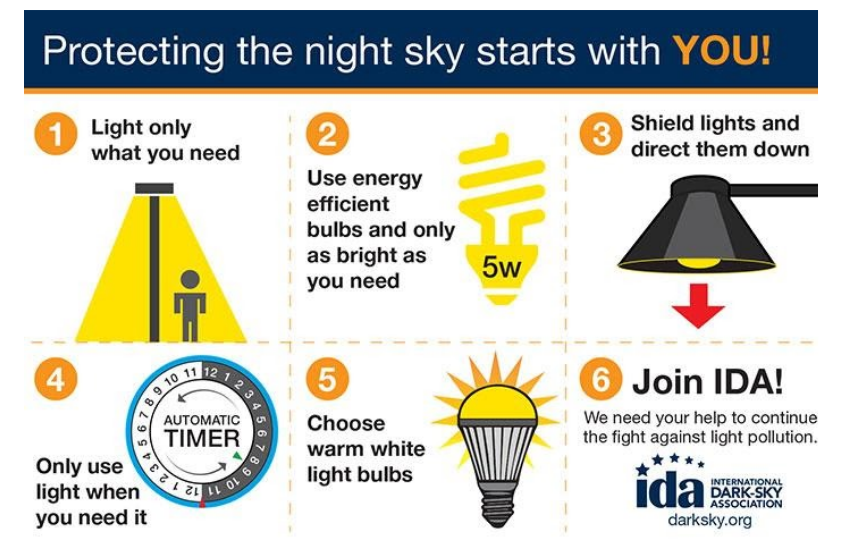
-
Turn off unnecessary lights (both indoor and outdoor)
This is the most important and consequential thing you can do. The IDA estimates that least 30 percent of all outdoor lighting in the U.S. alone is wasted, mostly by lights that aren’t shielded. That adds up to $3.3 billion and the release of 21 million tons of carbon dioxide per year!
To offset all this extra carbon dioxide, we’d have to plant 875 million trees annually.
-
Assess the lighting around your residence
Poor lighting not only creates glare and light pollution but also wastes enormous amounts of energy and money. Take a few moments to inspect your property for inefficient, poorly installed, and unnecessary outdoor lighting. Learn how by visiting the IDA’s Residential/Business Lighting page.
-
Find and IDA-Advocate
IDA’s grassroots advocates are trained to share best practices and tools that are locally attuned to your specific geographic, political and demographic needs. Advocates are not only provide you with technical knowhow, but can also get you in touch with other concerned individuals in your area.
-
Advocate for a lighting ordinance in your town
Local lighting ordinances ensure that your municipality is addressing artificial light at night. Find out if your town has a lighting ordinance. If not, try working with them to pass one. If your town does have an ordinance, make sure that it’s being enforced.
People/Organizations to Follow

